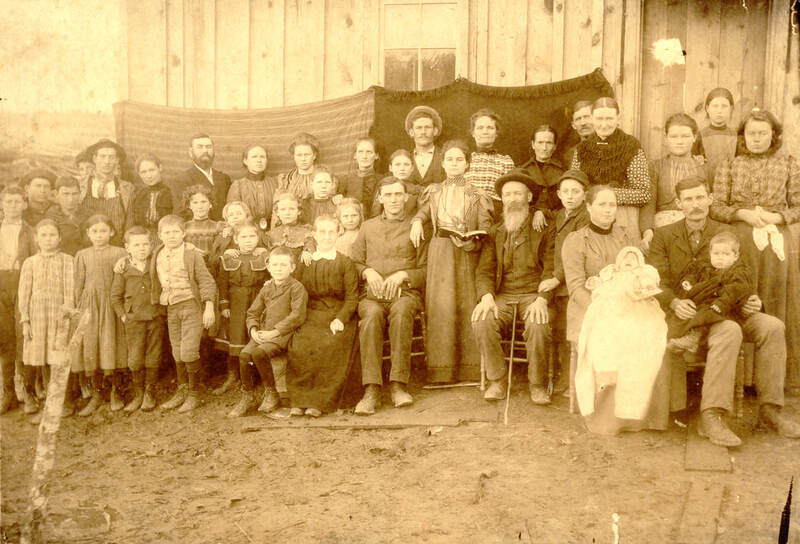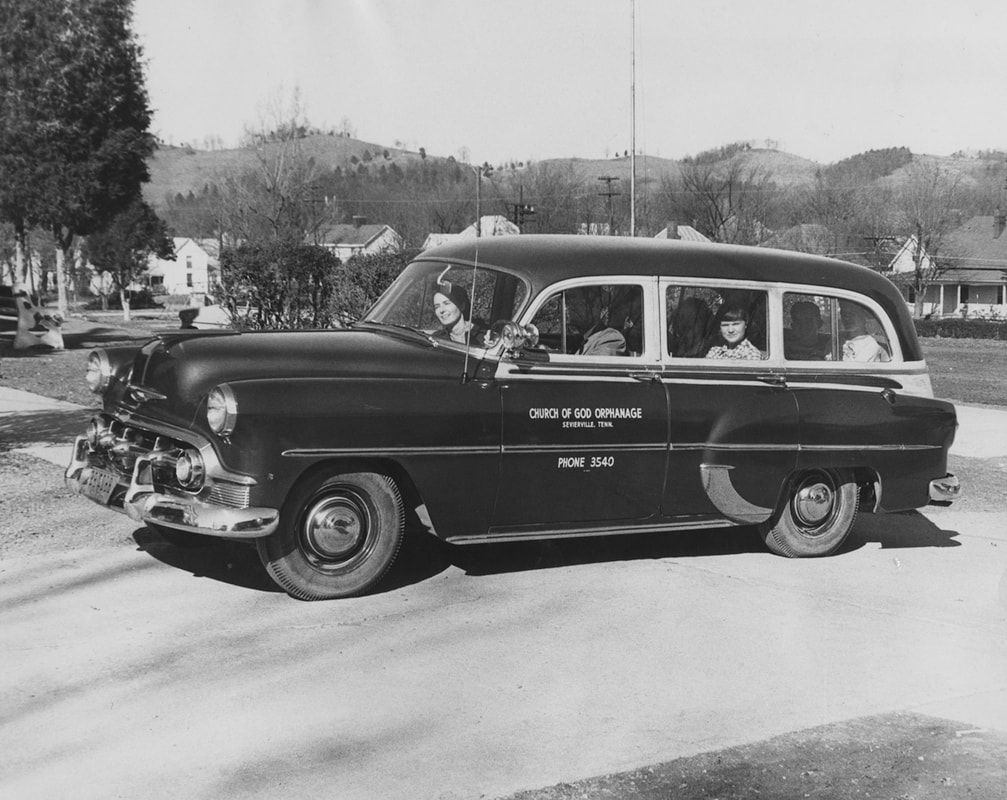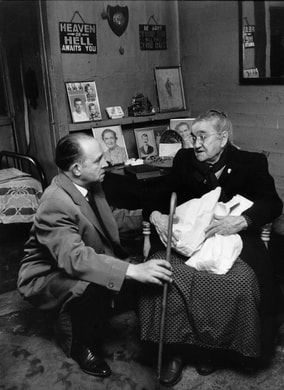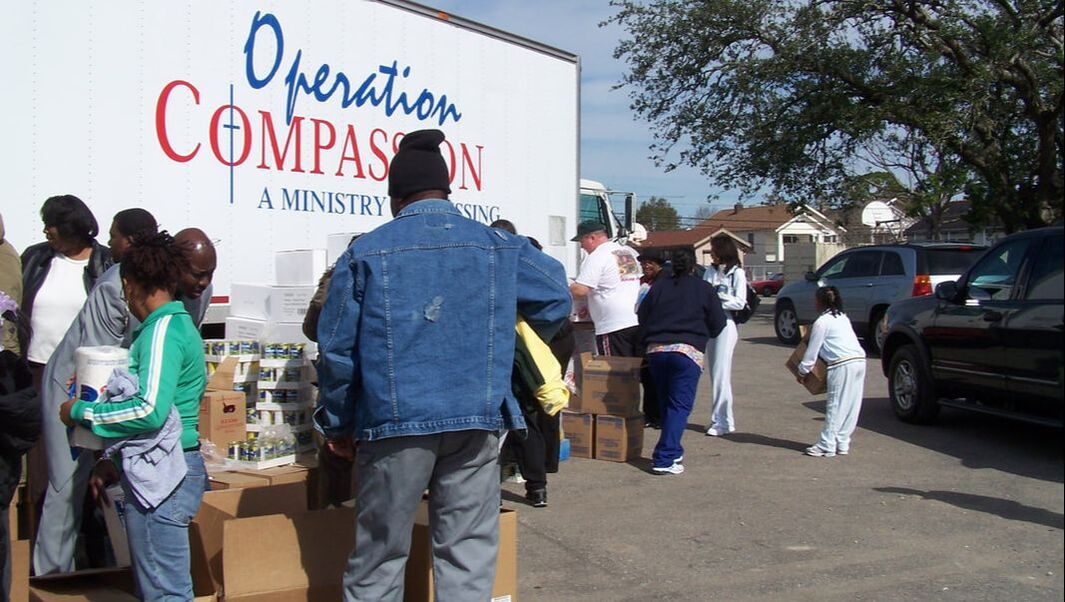CARING FOR THE WHOLE PERSON:
DIVISION OF CARE MINISTRIES
Louis F. Morgan
WE CARE FOR the whole person. This has been the Church of God’s message since our formative years. Those before us in this movement recognized that true Christianity is transformational. This, in essence, means becoming more like Christ and seeking to fulfill the greatest commandments given to us by Jesus: “Love the Lord with all your heart, soul, and mind, and love your neighbor as yourself” (paraphrase of Matt. 22:37-39). Scripture clearly emphasizes service to others, especially those who are hurting and in need, as an act of service to Christ himself (Matt. 25:31-40).
Early Ministries of Care
Our spiritual fathers and mothers sought to attain to this level of godly love and desired to help others grow spiritually, which often first required meeting others’ physical needs. At the turn of the twentieth century, Church of God beliefs were aligned with those of the broader, socially-conscious Holiness Movement, and we offered several social programs, including caring for orphans, feeding the needy, and providing shelter to troubled youth and women.
When A.J. Tomlinson traveled throughout Appalachia selling Bibles in the 1890s, he was captivated by the spiritual, educational, and physical needs along the Tennessee-North Carolina border. Moved with compassion for the impoverished mountaineers, he and his family relocated to Culberson, North Carolina, where, in April 1900, they started a school and began an orphanage.
When Tomlinson and his family temporarily returned to Indiana in November 1902, he left the children of his school and orphanage in the care of his friends W.F. and Nettie Bryant. Later, Bryant recalled, “The whole number in the school was thirty-five, eight of whom were orphan children that I kept in my home.” Thereafter, Bryant traveled the mountains of Tennessee, North Carolina, and Georgia in missionary work for the poor and was keenly aware of the number of orphaned children within the region. “I have met so many orphan children who need attention, instruction, food and clothing,” wrote Bryant. “As I meet them my heart is broken and I have wept and cried before God about their condition, until I have now taken some into my own home.” In 1911, W.F. and Nettie Bryant began operating an orphanage and clothes distribution center in Cleveland, Tennessee, known as “The Faith Orphanage and Children’s Home.”
Our early ministry of care was not limited to the United States. As Church of God missionaries reached other countries, they shared Christ’s love by caring for those whom they encountered. One such person was Lillian Trasher of Dahlonega, Georgia, who in 1910 became a Church of God missionary to Egypt and started an orphanage upon seeing the number of homeless children needing care. The Church of God Evangel published reports of her work that gained financial and prayerful support from members in the United States. Later, Trasher earned the title “The Nile Mother” because of her ministry of care to Egyptian orphans, and it was Church of God members who first supported her work there.
Orphans were not the only recipients of care in those early days. Throughout Florida, Georgia, and the Carolinas, Ida Lopez Hadsock helped prostitutes and the homeless find a new way of life while the Pentecostal Rescue Home offered safe shelter for women in the West. By 1917, Roy L. Cotnam, then state overseer of Oklahoma, his wife, Ara, and Blanche Darner, a nurse, were managing the Pentecostal Rescue Home, a benevolent mission for “female outcasts, fallen and homeless adults.”Although the ministry was small, its impact on the lives of dozens of women was eternal, including a woman who died from tuberculosis. As a result of the home, she was saved, sanctified, baptized with the Holy Ghost, and “went to glory rejoicing.”
Through the years, local churches have ministered to their communities by creating care programs, which often were adopted for our national and international ministries. An early example is the Narragansett Church in Chicago. Successful church planter Amelia Shumaker sensed the Holy Spirit guiding her to Chicago and, accompanied by her ministry coworker, Martha Zimmerlin, moved to the Windy City. By October 14, 1929, the Narragansett Church was organized from their efforts. Fifteen days later the stock market’s crash caused the economic crisis known as the Great Depression. Chicago was especially devastated and unemployment, starvation, and hopelessness abounded. Amelia then understood God’s providence in leading her to Illinois as she began to reach out to Chicago’s hurting families.
Narragansett Church members began meeting physical needs of community residents by serving meals, providing clothing, and distributing groceries—giving them an opportunity to share the message of salvation. As a result, the church grew. A Sunday school was organized to provide biblical training, and Amelia continued to preach with power as the Holy Spirit transformed lives. In time, the local church expanded into other areas of Chicago as additional centers of compassionate ministry.
Our spiritual fathers and mothers sought to attain to this level of godly love and desired to help others grow spiritually, which often first required meeting others’ physical needs. At the turn of the twentieth century, Church of God beliefs were aligned with those of the broader, socially-conscious Holiness Movement, and we offered several social programs, including caring for orphans, feeding the needy, and providing shelter to troubled youth and women.
When A.J. Tomlinson traveled throughout Appalachia selling Bibles in the 1890s, he was captivated by the spiritual, educational, and physical needs along the Tennessee-North Carolina border. Moved with compassion for the impoverished mountaineers, he and his family relocated to Culberson, North Carolina, where, in April 1900, they started a school and began an orphanage.
When Tomlinson and his family temporarily returned to Indiana in November 1902, he left the children of his school and orphanage in the care of his friends W.F. and Nettie Bryant. Later, Bryant recalled, “The whole number in the school was thirty-five, eight of whom were orphan children that I kept in my home.” Thereafter, Bryant traveled the mountains of Tennessee, North Carolina, and Georgia in missionary work for the poor and was keenly aware of the number of orphaned children within the region. “I have met so many orphan children who need attention, instruction, food and clothing,” wrote Bryant. “As I meet them my heart is broken and I have wept and cried before God about their condition, until I have now taken some into my own home.” In 1911, W.F. and Nettie Bryant began operating an orphanage and clothes distribution center in Cleveland, Tennessee, known as “The Faith Orphanage and Children’s Home.”
Our early ministry of care was not limited to the United States. As Church of God missionaries reached other countries, they shared Christ’s love by caring for those whom they encountered. One such person was Lillian Trasher of Dahlonega, Georgia, who in 1910 became a Church of God missionary to Egypt and started an orphanage upon seeing the number of homeless children needing care. The Church of God Evangel published reports of her work that gained financial and prayerful support from members in the United States. Later, Trasher earned the title “The Nile Mother” because of her ministry of care to Egyptian orphans, and it was Church of God members who first supported her work there.
Orphans were not the only recipients of care in those early days. Throughout Florida, Georgia, and the Carolinas, Ida Lopez Hadsock helped prostitutes and the homeless find a new way of life while the Pentecostal Rescue Home offered safe shelter for women in the West. By 1917, Roy L. Cotnam, then state overseer of Oklahoma, his wife, Ara, and Blanche Darner, a nurse, were managing the Pentecostal Rescue Home, a benevolent mission for “female outcasts, fallen and homeless adults.”Although the ministry was small, its impact on the lives of dozens of women was eternal, including a woman who died from tuberculosis. As a result of the home, she was saved, sanctified, baptized with the Holy Ghost, and “went to glory rejoicing.”
Through the years, local churches have ministered to their communities by creating care programs, which often were adopted for our national and international ministries. An early example is the Narragansett Church in Chicago. Successful church planter Amelia Shumaker sensed the Holy Spirit guiding her to Chicago and, accompanied by her ministry coworker, Martha Zimmerlin, moved to the Windy City. By October 14, 1929, the Narragansett Church was organized from their efforts. Fifteen days later the stock market’s crash caused the economic crisis known as the Great Depression. Chicago was especially devastated and unemployment, starvation, and hopelessness abounded. Amelia then understood God’s providence in leading her to Illinois as she began to reach out to Chicago’s hurting families.
Narragansett Church members began meeting physical needs of community residents by serving meals, providing clothing, and distributing groceries—giving them an opportunity to share the message of salvation. As a result, the church grew. A Sunday school was organized to provide biblical training, and Amelia continued to preach with power as the Holy Spirit transformed lives. In time, the local church expanded into other areas of Chicago as additional centers of compassionate ministry.
Current Ministries of Care
City of Refuge
The City of Refuge is a current ministry reaching individuals and families living in poverty through its programs of providing food, clothing, shelter, job training and placement, housing, healthcare, and education. It traces its beginning to Mission Possible, a ministry started in 1970 when the Land family, including Jack and Mary Land, Steven and Peggy Land, and Rosemary Land Lester, purchased a house in Atlanta for the purpose of showing Christ’s compassion to those in need. The 20-room house, a former bordello and dinner club, served as an urban residential, discipleship, and rehabilitation center. Mission Possible intentionally sought out individuals involved in prostitution, alcohol and drug abuse, and with behavioral problems and saw dramatic and miraculous deliverances and conversions. Through Bible studies, a coffee house, the Midtown Mission Church, and numerous social and training programs, Mission Possible ministered to tens of thousands of people during its existence.
In 1997, Mission Possible’s ministries were integrated into the City of Refuge, a nonprofit organization led by Bruce Deel that helps Atlanta’s neediest residents transition out of poverty. Six years later, eight-acres in one of Atlanta’s most challenging neighborhoods was donated to the City of Refuge, which now occupies a warehouse complex for ministry that focuses on health and wellness, vocational training, housing, and youth development.
City of Refuge partners with other organizations and churches to help people pull themselves out of poverty through a process of meeting basic life needs (food, housing, clothing, etc.), helping them identify causes of their crisis and receive treatment and developing life skills for continued development and growth physically, emotionally, financially, and spiritually.
City of Refuge
The City of Refuge is a current ministry reaching individuals and families living in poverty through its programs of providing food, clothing, shelter, job training and placement, housing, healthcare, and education. It traces its beginning to Mission Possible, a ministry started in 1970 when the Land family, including Jack and Mary Land, Steven and Peggy Land, and Rosemary Land Lester, purchased a house in Atlanta for the purpose of showing Christ’s compassion to those in need. The 20-room house, a former bordello and dinner club, served as an urban residential, discipleship, and rehabilitation center. Mission Possible intentionally sought out individuals involved in prostitution, alcohol and drug abuse, and with behavioral problems and saw dramatic and miraculous deliverances and conversions. Through Bible studies, a coffee house, the Midtown Mission Church, and numerous social and training programs, Mission Possible ministered to tens of thousands of people during its existence.
In 1997, Mission Possible’s ministries were integrated into the City of Refuge, a nonprofit organization led by Bruce Deel that helps Atlanta’s neediest residents transition out of poverty. Six years later, eight-acres in one of Atlanta’s most challenging neighborhoods was donated to the City of Refuge, which now occupies a warehouse complex for ministry that focuses on health and wellness, vocational training, housing, and youth development.
City of Refuge partners with other organizations and churches to help people pull themselves out of poverty through a process of meeting basic life needs (food, housing, clothing, etc.), helping them identify causes of their crisis and receive treatment and developing life skills for continued development and growth physically, emotionally, financially, and spiritually.
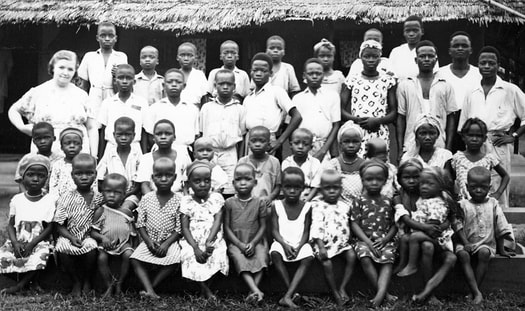 Church of God members and congregations support many orphanages and children’s
Church of God members and congregations support many orphanages and children’s homes globally including this orphanage in the Republic of Malawi, Africa.
Lee University Leonard Center / Service Learning Program
Another current ministry of care is Lee University’s Leonard Center, which facilitates reflective community interactions for students while teaching them about service, benevolence, and social justice. A gift from the Lazarus Foundation of Bristol, Tennessee, funds this program, placing students in service opportunities both in the United States and globally. Since its inception in 2003, each Lee student is required to complete eighty hours of service before graduation, which provides them with hands-on instruction in recognizing service as part of God’s purpose for us and how vocation can be used in service to God and others. In 2009, Lee’s program was one of six universities recognized for top placement on the President’s Higher Education Community Service Honor Roll—the highest federal recognition a university can receive for volunteerism, service-learning, and civic engagement. Lee students volunteer more than 65,000 hours of service annually in social ministry projects.
Peniel Residential Drug/Alcohol Treatment Center
Established in 1980, Peniel has ministered to thousands of people and has one of the highest success rates in the nation for recovery from substance abuse. For over forty years, Dr. Marion Spellman, who directs Peniel with her husband, Harold, has desired to minister to hurting individuals, partially from viewing first-hand in her own family and community the brokenness and problems connected with substance abuse. Her previous ministry work with incarcerated women at a correctional facility and then working with females at Teen Challenge allowed Dr. Spellman to see the benefits a structured program brings to substance abuse treatment. She founded Peniel in Dillsburg, Pennsylvania, to minister to individuals requiring long-term inpatient treatment for drug and alcohol addiction, as well as mild emotional problems. Now based in Johnstown, Pennsylvania, Peniel has two expanded dormitories, a gymnasium, and a sanctuary. Its intensive inpatient treatment approach includes residential life, spiritual emphasis, counseling and therapy, life-skills classes, vocational therapy, and recreation. Key to Peniel’s mission is its commitment to transforming the whole person and its integrated spiritual emphasis.
Another current ministry of care is Lee University’s Leonard Center, which facilitates reflective community interactions for students while teaching them about service, benevolence, and social justice. A gift from the Lazarus Foundation of Bristol, Tennessee, funds this program, placing students in service opportunities both in the United States and globally. Since its inception in 2003, each Lee student is required to complete eighty hours of service before graduation, which provides them with hands-on instruction in recognizing service as part of God’s purpose for us and how vocation can be used in service to God and others. In 2009, Lee’s program was one of six universities recognized for top placement on the President’s Higher Education Community Service Honor Roll—the highest federal recognition a university can receive for volunteerism, service-learning, and civic engagement. Lee students volunteer more than 65,000 hours of service annually in social ministry projects.
Peniel Residential Drug/Alcohol Treatment Center
Established in 1980, Peniel has ministered to thousands of people and has one of the highest success rates in the nation for recovery from substance abuse. For over forty years, Dr. Marion Spellman, who directs Peniel with her husband, Harold, has desired to minister to hurting individuals, partially from viewing first-hand in her own family and community the brokenness and problems connected with substance abuse. Her previous ministry work with incarcerated women at a correctional facility and then working with females at Teen Challenge allowed Dr. Spellman to see the benefits a structured program brings to substance abuse treatment. She founded Peniel in Dillsburg, Pennsylvania, to minister to individuals requiring long-term inpatient treatment for drug and alcohol addiction, as well as mild emotional problems. Now based in Johnstown, Pennsylvania, Peniel has two expanded dormitories, a gymnasium, and a sanctuary. Its intensive inpatient treatment approach includes residential life, spiritual emphasis, counseling and therapy, life-skills classes, vocational therapy, and recreation. Key to Peniel’s mission is its commitment to transforming the whole person and its integrated spiritual emphasis.
|
Caring for Children
For decades, the flagship center of care for children in the Church of God has been the Smoky Mountain Children’s Home. Desiring to live according to New Testament teachings, early in our existence the Church of God was compelled to exemplify “pure and undefiled religion” by caring for orphans (James 1:27). Although previous orphanage ministries had proven short-lived, by 1920, we had a renewed zeal to care for orphans, many of whom were left alone following the death of their parents during the Influenza Epidemic of 1918. When General Overseer A.J. Tomlinson gave an emotional appeal at the 1919 Assembly, many delegates began to weep upon hearing his plea to assist homeless children. One delegate spontaneously gave $100 during the service and was followed with donations from other delegates. Local churches responded by collecting offerings also. On December 17, 1920, an orphanage was established in Cleveland, and Lillian Kinsey was appointed as matron. Four homeless children were the first residents assigned to her care. By the close of 1920, the Church of God was fully committed to benevolence ministry. As the number of children at the orphanage increased, leadership realized the growing financial responsibility and encouraged local churches to participate. Answering the call, many congregations enthusiastically collected offerings. On March 12, 1921, the Church of God Evangel published a letter from Bertha Bloomingdale of Calhoun, Georgia, noting one method for receiving the offering that quickly became a Church of God tradition—the “penny march.” Bloomingdale lived in a community where no local church existed, but the nearby Deal family provided a room in their house for a congregation to meet. In that simple setting, the earliest-known “penny march” for the Church of God orphanage began. Although not unique to the Church of God, the practice spread quickly after Bloomingdale’s letter was published, and it has been continued by subsequent generations as a means for local members to actively participate in James 1:27 by their sacrificial giving. Between 1922 and 1947, the increasing demand for this ministry resulted in the purchase or construction of several homes located throughout Cleveland and nearby communities, including Baugh Springs at McDonald, South Lee Highway, and Benton Pike. By 1949, the orphanage relocated from Cleveland to the property previously housing the Church of God Bible Training School in Sevierville, Tennessee. The spacious campus allowed all children to be served in one location. In the late 1920s, work began on an orphanage for the church’s black membership, as Jim Crow laws forced separation of races in many places during that time. Ultimately, property was purchased in Eustis, Florida, for an orphanage and school, and Mother Jessie L. Hayward was appointed as its first matron in 1929. It was not until 1966 that the Smoky Mountain Children’s Home was integrated. In time, children’s needs began to change, and the Church of God expanded its ministry to include victims of neglect and abuse. Foster family care, residential treatment centers, social work, counseling services, educational opportunities, and structured group living services were incorporated. Homes for children also have been established in other locations, including Florida, North Carolina, South Carolina, and West Virginia. And, Church of God members and churches support many orphanages and children’s homes globally. |
CHURCH OF GOD CHILDREN'S HOMES IN THE U.S.
Church of God Children’s Home of North Carolina - Located in Concord, North Carolina, the Church of God Children’s Home of North Carolina began in a mill village in 1944 when two small girls were brought to the home of Reverend A.V. Childers, then pastor of Elm Street Church in Kannapolis. Childers won favor with local businessman Charles A. Cannon, who owned Cannon Mills and donated seven acres of land and a farmhouse for an orphanage. Elm Street members then received a special offering to finance the orphanage. Since then, hundreds of hurting children have been ministered to and their lives changed by the love they have received at the home.
South Carolina Church of God Home for Children - South Carolina Church of God Home for Children opened in Gaffney on January 13, 1956, with four children. J.B. Camp served as the first Superintendent. Now located in Simpsonville, South Carolina, it is supported primarily by Church of God congregations throughout South Carolina. New River Ranch - New River Ranch is located in Fayetteville, West Virginia, on 266-acres of farmland previously used as a “show” horse ranch. Donated by Joe and Sandi Lewis, the ranch opened in January 1988 and provides residential and group home care and behavioral health services to homeless and at-risk youth ages 10 to 18. Heart of Florida Youth Ranch - Heart of Florida Youth Ranch, located near Ocala, Florida, began in November 1990 and is a residential home to dependent, neglected, abused, and troubled youth. Providing a safe, nurturing, family lifestyle environment, this horse ranch also serves as an outpatient community, mental-health facility providing counseling and specialized services for boys and girls from infancy through seventeen years of age. |
Caring for Seniors: Iris B. Vest SpiritCare Center
Dedicated in 2003, the Iris B. Vest Widows Ministry Center was a vital way the Church of God sought to fulfill the biblical mandate to care for widows (James 1:27). This nonprofit, independent living, residential facility is funded through donations and provides living suites, spacious lounges and patio areas, a dining room, and a chapel. The Widows Center was built in Sevierville, Tennessee, adjacent to the Smoky Mountain Children’s Home, as a means of providing a mutually beneficial atmosphere for the widows and children and youth. Broadening its services to include retired ministry couples, the ministry has been renamed the Iris B. Vest SpiritCare Center.
Dedicated in 2003, the Iris B. Vest Widows Ministry Center was a vital way the Church of God sought to fulfill the biblical mandate to care for widows (James 1:27). This nonprofit, independent living, residential facility is funded through donations and provides living suites, spacious lounges and patio areas, a dining room, and a chapel. The Widows Center was built in Sevierville, Tennessee, adjacent to the Smoky Mountain Children’s Home, as a means of providing a mutually beneficial atmosphere for the widows and children and youth. Broadening its services to include retired ministry couples, the ministry has been renamed the Iris B. Vest SpiritCare Center.
|
|
Caring for the Ministry
Center for Ministerial Care
The Church of God values its men and women who serve on the frontlines of ministry week after week. In an era where ministry burnout is increasing, the Center for Ministerial Care serves our clergy to help curtail potential burnout and offer encouragement during times of personal difficulty. Resources available to ministers include confidential telephone counseling, ministerial enrichment programs (such as marriage and family enrichment seminars, pastoral sabbatical programs, and ministerial placement services), professional consultation for church counseling ministries, pastoral crisis intervention, and ministerial advocacy. In addition, our church honors the sacrifice and dedication of our retired ministers for their years of service in fulfilling God’s call through SpiritCare, which offers support to our retired ministers, spouses, and minister’s widows and creates a network of contact where they can remain involved in the life of the church. The Helping Hands program reimburses pharmaceutical medications for retired ministers. And, in collaboration with World Missions, Ministerial Care has an international ministry program for missionaries and their families.
Now well into our second century as a movement, the Church of God endeavors to minister with a profoundly compassionate witness to those in need—in communities where we are located and even across the globe to others experiencing brokenness and disaster. We are concerned about the development of the whole person—spiritual, physical, emotional, and intellectual—and offer various ministries of care to accomplish this goal. It is, after all, our scriptural mandate and the Jesus way.
Center for Ministerial Care
The Church of God values its men and women who serve on the frontlines of ministry week after week. In an era where ministry burnout is increasing, the Center for Ministerial Care serves our clergy to help curtail potential burnout and offer encouragement during times of personal difficulty. Resources available to ministers include confidential telephone counseling, ministerial enrichment programs (such as marriage and family enrichment seminars, pastoral sabbatical programs, and ministerial placement services), professional consultation for church counseling ministries, pastoral crisis intervention, and ministerial advocacy. In addition, our church honors the sacrifice and dedication of our retired ministers for their years of service in fulfilling God’s call through SpiritCare, which offers support to our retired ministers, spouses, and minister’s widows and creates a network of contact where they can remain involved in the life of the church. The Helping Hands program reimburses pharmaceutical medications for retired ministers. And, in collaboration with World Missions, Ministerial Care has an international ministry program for missionaries and their families.
Now well into our second century as a movement, the Church of God endeavors to minister with a profoundly compassionate witness to those in need—in communities where we are located and even across the globe to others experiencing brokenness and disaster. We are concerned about the development of the whole person—spiritual, physical, emotional, and intellectual—and offer various ministries of care to accomplish this goal. It is, after all, our scriptural mandate and the Jesus way.
Louis F. Morgan, Ph.D., is professor and director of Library Services at Lee University.

